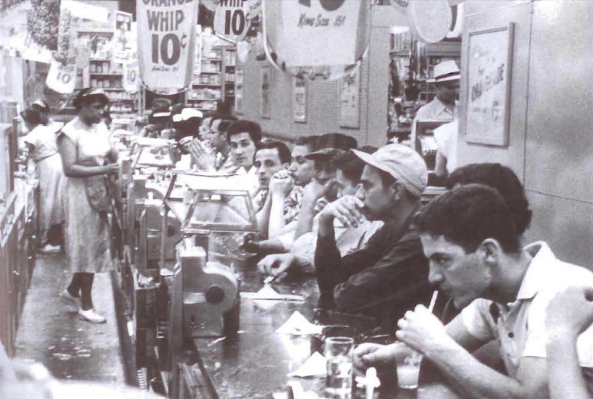Photography philosophy
Robert Frank was a Swiss born photographer who settled in America and continued his artistic work. Frank practiced many forms of photography and he did photography both for the commercial and fashion purposes and was considered an influential American photographer who was also a mentor to many young American artists.
He practiced street photography and later on documentary photography that saw him embark on a road trip across America. Frank photographed the streets of New York and his work was a guide to many other young artists who were interested in the same form of artistry.
Gary Winogrand was a social landscape photographer just like Frank; he also did some commercial photography for the picture press. His earlier art works did not portray much for instance the couple’s photo in the collection ‘the family of man’.
He was funded by Guggenheim grant to tour America; his tour was aimed at capturing the picture of America post J.F Kennedy’s assassination. Social Landscape photography accomplished two tasks; highlighting areas that needed social reforms and use of good cameras to obtain quality pictures. He regarded photography as a discipline just like painting. He always aimed to photograph something just to see how it looked when photographed.
Aesthetic approach
Frank documented the post-depression American society and he saw Americans as soulless, hopeless, ignorant people who were prone to violence. He presented this image in his photography despite the F.S.A.; Farm Security Agency’s intent to portray a society that was recovering even though that was not the case.
He published his collection ‘the Americans’ in France since no American wanted to publish his work. He addressed his work to show how the Americans focused on commercial and material things and in turn this materialistic behavior led to division and widespread alienation among individuals.
In his pictures Frank used blurry images, altered angle of focus and he took pictures of people without them knowing hence the premeditated look in the people he photographed. Frank’s work was used to protest materialism, conformity to norms and mass culture which was widespread in post-depression America.
Gary Winogrand in his photography focused on body languages and human gestures that indicated that a person was struggling to hide their feelings or there was tension among individuals. He altered the angles at which he positioned the camera while taking a picture and cropped the photos he took to get his desired effect.
Using Winogrand’s art we can conclude that American photography was more concerned with neutrality and form rather than narration. The photographer of social landscape was lucky that this form of photography allowed only the artist to select which pictures from their work that were to be produced and distributed.
The practice of social landscape photography did not do away with other forms especially street photography instead it left room for other art forms to be explored.
Specific images that exemplify their vision of America
Robert Frank’s picture titled “the drug store” which showed how the moral American society had changed into an immoral self-delusional society. This picture portrayed the American people as hopeless and full of despair. This picture showed how grim the future was after the depression.

Winogrand’s photograph below shows a man with multiple amputations in contrast to other people in the same photograph who stood upright and had use of all their limbs. This picture enhanced how evident it is that there was interpersonal tension there and they were trying to mask it with their body stances.
